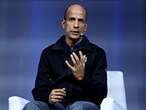When Joe Biden left office last month, he did so having forgiven more student loan debt than any of his predecessors—a total of $188.8 billion for 5.3 million borrowers over his four-year term. And yet, at the end of 2024, the total outstanding federal student loan debt was roughly $1.7 trillion, held by nearly 43 million borrowers. That’s more than when Biden took office.
So, despite a four-year stretch during which the Biden administration actively forgave billions, it seemingly didn’t put a dent in the overall student debt balance. How can that be?
It’s complicated, and there were several factors at play. For one, there was a long pause in student loan repayments due to the pandemic, during which borrowers were not required to make any payments and their loans didn’t accrue any interest, for a roughly three-and-a-half-year period between March 2020 and September 2023. During that time, borrowers were still able to borrow, adding to overall debt counts, but payments weren’t coming in to counteract it. The net effect? Total debt tallies increased.
Additionally, college tuition and fees have continued to rise at an average of 7% annually over the past 20 years. Those additional costs mean that each year’s new crop of borrowers are taking on more debt than the ones before them, and many of those new borrowers are years away from starting repayments, presumably after they earn their degrees and enter the workforce.
Why Biden’s loan forgiveness didn’t lower aggregate student debt
In all, the Biden administration forgave around 12% of outstanding student federal loan debt, says Mark Kantrowitz, a higher education and financial aid expert. But “the total forgiveness was only $188 billion, which is the amount of new debt that accumulates in about two years. So, it was a two-steps forward, one-step back situation,” he says. In other words, the “crosscurrents” at play—more debt, less progress in paying down current debt, and Biden’s forgiveness programs—led us to a place where more debt accumulated over the past four years.
We also don’t know how many people are actively repaying their loans after the pandemic-era pause, as the data has yet to be released, Kantrowitz says. But he does think that we’re likely to see total student debt levels increase with Trump back in office. That’s because there’s likely to be fewer, if any, new forgiveness programs, a scaling back of existing programs, and perhaps more lender-friendly legislation. Effectively, the environment could be the opposite of the Biden era’s.
What’s causing the student loan crisis?
Biden’s measures, which were of a higher caliber than any of his predecessors’, weren’t enough to reverse the total debt balance from rising. Getting to the heart of the issue may require looking deeper at what’s actually causing the student loan crisis.
According to a September 2024 analysis by academic researchers Adam Looney and Constantine Yannelis and published by the Brookings Institution, part of the problem may be unintended consequences. The federal government wanted to make college degrees more affordable and attainable to more Americans, so it changed federal aid rules allowing for more people to access funding to pay for school. While those were noble aims, it isn’t necessarily what happened.
“This led to rising enrollment of relatively disadvantaged students, but the increase was primarily at poor-performing, low-value institutions whose students systematically failed to complete a degree, struggled to repay their loans, defaulted at high rates, and floundered in the job market,” the report reads. “As these new borrowers experienced similarly poor outcomes, their loans piled up, loan performance deteriorated, and with it the finances of the federal program.”
Kantrowitz agrees that students failing to earn their degrees is likely a focal point of the issue.
“I’m not one of those people who believe that there’s a student loan problem that needs to be fixed,” he says, “so much as that we have a college completion problem.” He claims that the borrowers who generally have trouble repaying their loans and end up in dire financial situations as a result are those who take on debt, but don’t graduate—they pay a financial penalty but don’t reap the rewards in terms of career and earning opportunities that a college degree provides.
With that in mind, Kantrowitz thinks that getting students to actually graduate may be the single biggest step we can take to help ease the pain of overall student debt balances. “What we need to do is find better ways to get students to the finish line,” he says. “If they get a degree that has value, they should be able to repay the student loans.”










No comments